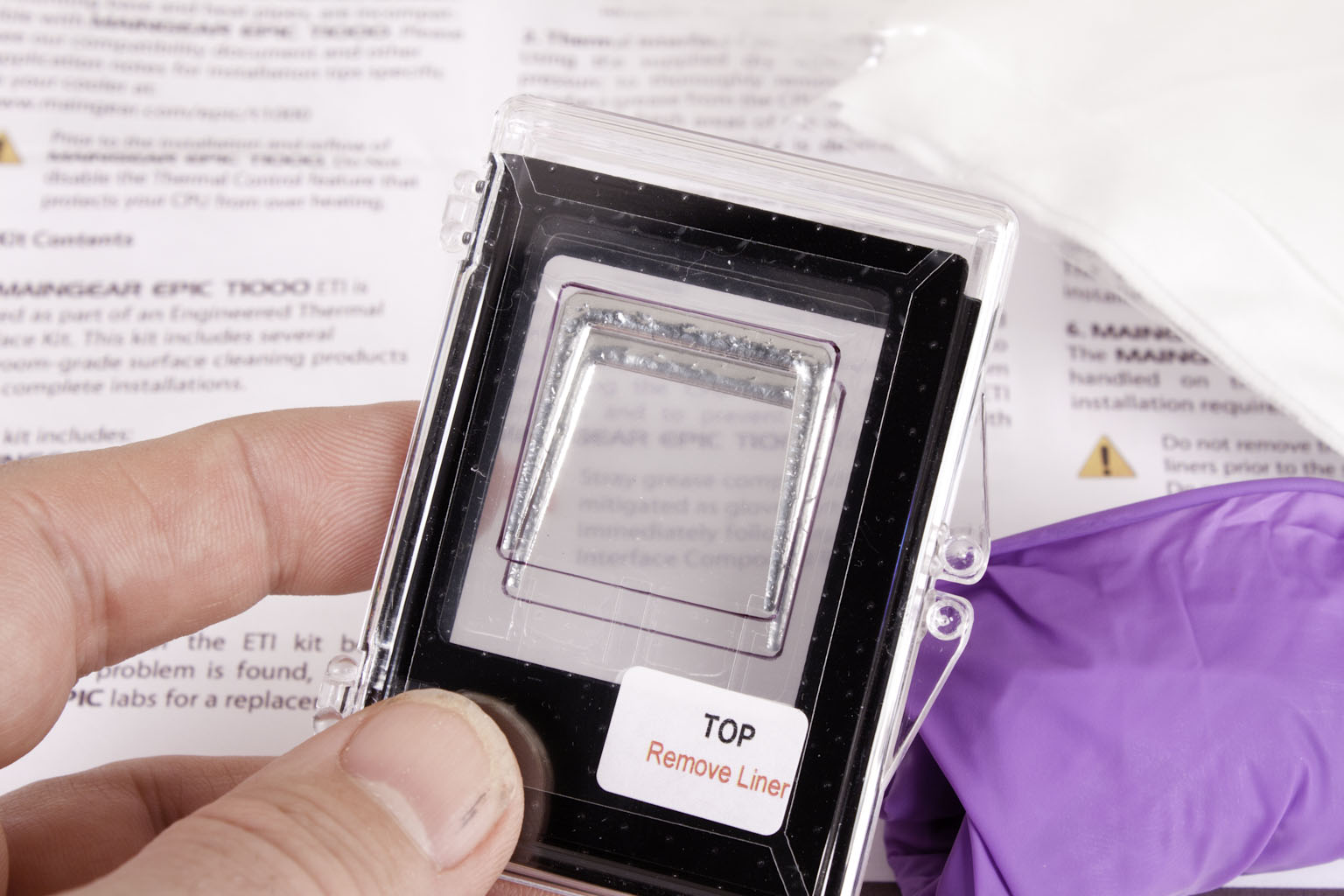What’s in the Box -
MAINGEAR sent us a kit for both the 1155/6 socket and the 2011 socket. Each kit contains the same thing, with the exception of the actual thermal interface material. Once you open up the plastic clamshell you will see that MAINGEAR thought of pretty much everything, including a well written three-page instruction manual (when was the last time you saw an instruction manual for thermal paste?).
 |
 |
 |
You also get four lint free “clean room” cloths, a pair of powder free rubber gloves MAINGEAR’s T1000 cleaning solution (that stuff is amazing, it even cleaned the lettering right off of the CPU socket!), and two of what MAINGEAR calls ETI (Engineered Thermal Interface). 
The ETIs are what is the most interesting. As you can see the material is built up along the “top” edge of the plate. This design is what will allow it to flow across the CPU (if applied right) and fill in all of the holes and lines that might otherwise hold air and prevent optimal thermal transfer.
What is the ETI -
Although we do not know exactly what the alloy is that MAINGEAR is using (yes we asked them, but they were not telling) we are told that there are several that could fit the bill. Still even without the exact formula we can tell you what it does. MAINGEAR calls the T1000 a phase changing thermal interface material and it is. When the T1000 is exposed to heat it becomes semi-liquid (also called plastic). In this state (and if the proper pressure is applied) the T1000 will flow across the surface of the CPU and be forces into all defects in the surface of both the CPU heat spreader and the cooling head of your heatsink or water block. This will create optimal contact between the CPU and the cooler all with almost zero curing time.
 |
 |
With traditional thermal paste (even our favorite Ceramique) there are chances for imperfect application and also the chance for the paste to spread unevenly across the surface of the CPU and the Cooler. Also because it is not a liquid, it does not flow the same way across both surfaces. Instead it tends to clot and lump. This more than anything else can create problems in thermal transfer (it is also why you see people spread thermal paste with a credit card or similar. They are attempting to get the best distribution of past across the surface of the CPU.



